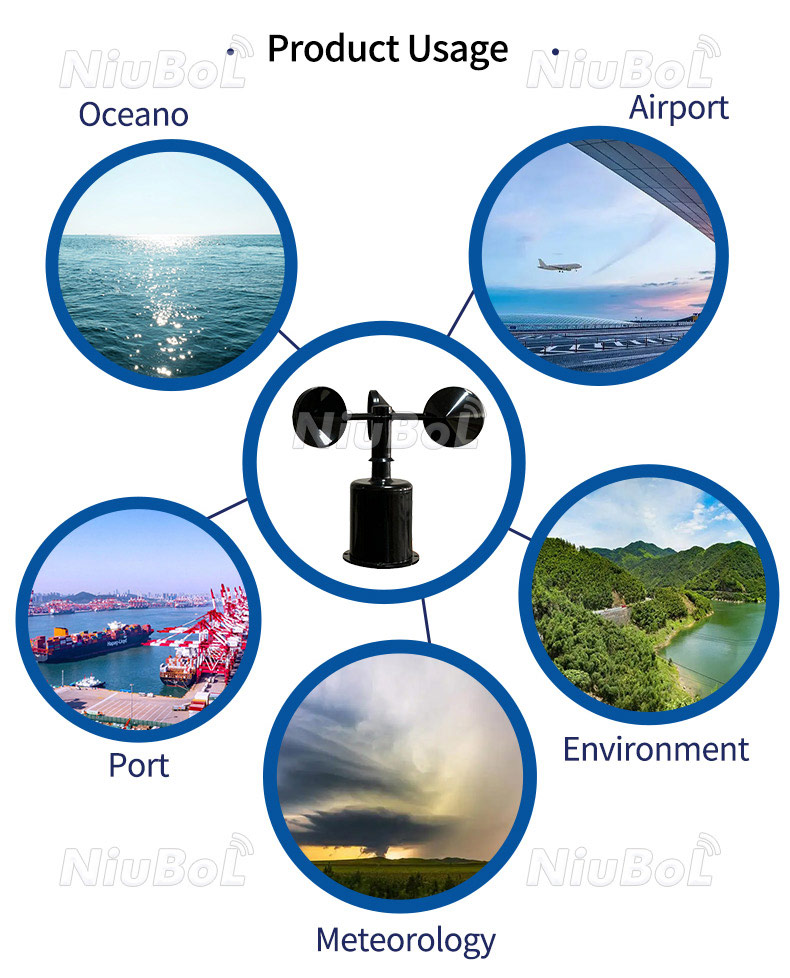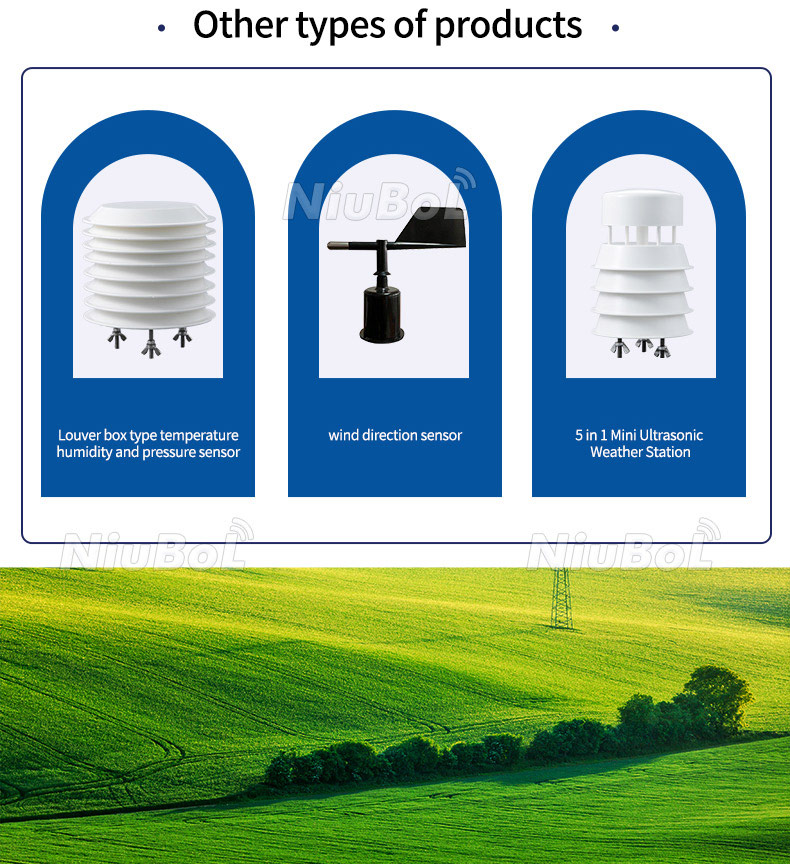

— Products —
 Consumer hotline +8618073152920
Consumer hotline +8618073152920 WhatsApp:+8615367865107
Address:Room 102, District D, Houhu Industrial Park, Yuelu District, Changsha City, Hunan Province, China
All products
Wind Speed Sensor Anemometer, or Wind Speed Sensor Anemometer, is an instrument used to measure wind speed and direction. It has a wide range of applications in many fields such as meteorology, aviation, navigation, energy and industry. The three-cup (Three-cup anemometer) is a simple mechanical anemometer whose design dates back to the late 19th century. The principle of operation of this anemometer is based on the force of the wind on a rotating cup to measure wind speed. A···
Tel/WhatsApp:+8615367865107
Email:Arvin@niubol.com +Nearly 100 partner company in more than 68 countries. We are committed to providing high-quality, practical products to meet your needs and help you solve problems.Product Details






Wind Speed Sensor Anemometer, or Wind Speed Sensor Anemometer, is an instrument used to measure wind speed and direction. It has a wide range of applications in many fields such as meteorology, aviation, navigation, energy and industry.
Wind speed sensors usually measure wind speed based on the following principles:
1. Mechanical Anemometer: The wind acts on a rotating wheel (such as a three-blade wind wheel) to drive the wheel to rotate, and the wind speed is determined by calculating the speed of rotation.
The three-cup (Three-cup anemometer) is a simple mechanical anemometer whose design dates back to the late 19th century. The principle of operation of this anemometer is based on the force of the wind on a rotating cup to measure wind speed. A three-cup anemometer usually contains three identical cups that are fixed on a horizontal axis and are free to rotate. Each cup is of the same shape and mass to ensure that each cup has the same rotational speed under the action of the wind.
The three-cup anemometer works:
When the wind blows over the cups, the pressure of the wind on the cups causes the cups to deflect in the opposite direction of the wind. As the wind speed increases, so does the deflection angle and rotation speed. By measuring the speed of rotation of the cup, the wind speed can be calculated. A three-cup anemometer will also usually have a device to measure the average rotation period of the cups to get the wind speed.
Three-cup anemometer features:
- Simple structure: the structure of the three-cup anemometer is relatively simple, easy to install and maintain.
- High reliability: due to its mechanical structure, the three-cup anemometer can still maintain a high degree of reliability in harsh environments.
- Fast Response: Three-cup anemometers have a fast response to wind speed changes and can provide real-time wind speed data.
- Wind direction information: Some three-cup anemometers are designed to provide wind direction information.
2. electronic anemometers: using sensors such as hot wires, thermofoils or thermistors to calculate wind speed based on temperature changes due to changes in wind speed.
3. ultrasonic anemometers: use ultrasonic wave propagation time between two sensors to calculate wind speed, this method can work properly in harsh environments.

1. meteorological observation: to provide accurate wind speed and direction data, which is essential for weather forecasting and climate research.
2. Aerospace: Measuring real-time wind speed around aircraft is critical for flight path and take-off and landing safety.
3. Marine: Helps ship operators judge the safety and efficiency of navigation.
4. Renewable energy: In wind power generation, accurate wind speed data helps to assess the wind resource and optimise the efficiency of wind power generation.
5. Industrial: The control of wind speed is key in certain industrial processes, such as in chemical and agricultural applications.
6. Environmental protection: Monitoring the strength of wind in the natural environment and assessing the potential impact on ecosystems.
7. Sports and Recreation: For example, in paragliding, sailing and extreme sports, real-time wind speed information is critical to the safety of the activity.
The accuracy and reliability of wind speed sensor anemometers is critical for the above applications, and therefore their design and manufacture needs to follow strict relevant industry standards to ensure that the data provided is accurate and stable.

Sensors & Weather Stations Catalog
Agriculture Sensors and Weather Stations Catalog-NiuBoL.pdf
Weather Stations Catalog-NiuBoL.pdf
Related recommendations
 Multi-Depth Soil Sensor RS485
Multi-Depth Soil Sensor RS485 TDR Soil Moisture Sensor
TDR Soil Moisture Sensor Pyranometer Solar Radiation Sensors
Pyranometer Solar Radiation Sensors Soil ph sensor
Soil ph sensor Tipping Bucket Rain Gauge
Tipping Bucket Rain Gauge Air Temperature and Humidity Sensor
Air Temperature and Humidity Sensor
Screenshot, WhatsApp to identify the QR code
WhatsApp number:+8615367865107
(Click on WhatsApp to copy and add friends)